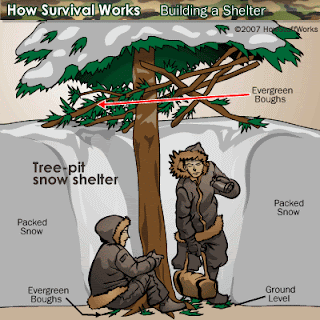
Exotic Shorthairs are wonderful shorthaired versions of the Persian, being hybrids between Persian and American Shorthair cats. They have the flat faces of the Persian but a short plush teddy-bear look, and the usual small high-pitched Persian voices. This breed was first recognized in the late 1960s. Very responsive to humans and human emotions; this breed has inherited their very tame personality and gentle ways from the Persian ancestry.
Identifying An Exotic Shorthair
Step 1:
Begin by looking at the body. The Exotic Shorthair is classified as a medium sized cat, but is at the high end of that class. Typically the male will weigh between ten and fifteen pounds, though they are actually shorter and don't stand as tall at the shoulder as the regular American Shorthair. What they lack in length and height they make up in breadth. They have extremely wide football player shoulders. Often their forms have elicited such names as "sumo kitty" and "Jabba the cat". Despite their appearance they are in fact not fat, this is an illusion created by their fur and muscle structure. They have a very wide and low body, with thick legs, and a barrel shaped midsection. The majority of their weight is accounted for by a squat and very dense bone structure and amazingly powerful muscles. The tail should be short and thick, carried low rather than pointing upward.
Identifying An Exotic Shorthair
Step 1:
Begin by looking at the body. The Exotic Shorthair is classified as a medium sized cat, but is at the high end of that class. Typically the male will weigh between ten and fifteen pounds, though they are actually shorter and don't stand as tall at the shoulder as the regular American Shorthair. What they lack in length and height they make up in breadth. They have extremely wide football player shoulders. Often their forms have elicited such names as "sumo kitty" and "Jabba the cat". Despite their appearance they are in fact not fat, this is an illusion created by their fur and muscle structure. They have a very wide and low body, with thick legs, and a barrel shaped midsection. The majority of their weight is accounted for by a squat and very dense bone structure and amazingly powerful muscles. The tail should be short and thick, carried low rather than pointing upward.
Step 2:
Examine the fur of the cat. For a shorthair breed it should be long, thick, and luxurious. This breed does not shed or need any grooming, so if you were to pet it, no hair should be stuck to your hand. The fur hangs in rolls from the cat's body, giving it the appearance that it is fat or obese. Fur texture should be similar to that of cashmere. Because the species is a hybrid of the American Shorthair, almost any coloring or pattern is acceptable and this is not an effective way of determining the cat's breed.
Step 3:
Pay close attention to the cat's head. A short and thick "linebacker" neck with a fur ruff should lead to a massive head. The skull is very wide and simply huge. The forehead is rounded; the cheeks are also rounded and impossibly full. The muzzle should be very short and end in a pug nose. The chin should be strong and jaws powerful, though this often appears understated due to the enormous surrounding cheeks. The cat's eyes will be almost perfect circles and widely spaced like those of an owl, their color should correspond to their fur. The most easily recognizable part of the Exotic Shorthair is most definitely the head. If it matches this description then you are most likely looking at a pedigree American Shorthair.
Tips & Warnings
According to cat show judges "The ideal Exotic should present an impression of a heavily boned, well balanced cat with a sweet expression and soft, round lines. The large, round eyes set wide apart in a large round head contribute to the overall look and expression. The thick plush coat softens the lines of the cat and accentuates the roundness". This is not meant to be an outdoor cat, and if you see one outdoors it is probably lost and in need of help. As a result most strays of this species don't survive long and should be brought to a shelter immediately. Its different look and loving personality is sure to find it a new home quickly.
Eye problems such as Keratosis Sequestrium can often be found in this species. It is prevalent in Persian and Siamese linked breeds. This is not genetic but the result of having a great deal of the surface of the eye exposed when the cat's eyes are open. This can be treated by a competent veterinarian, but if a cat contracts this disorder then it's likely to have relapses throughout its life, the owner should be prepared for this and have the resources and time to cover the medical bills.















